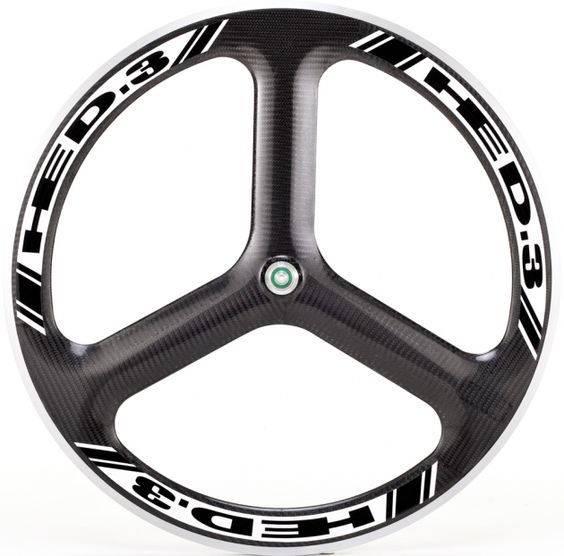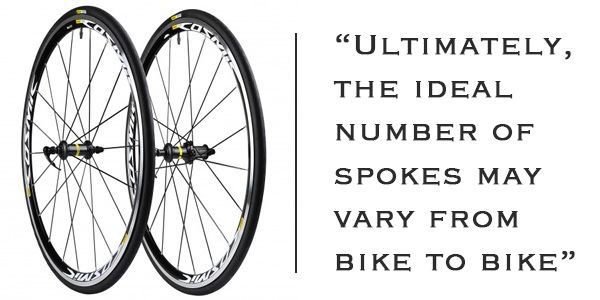Triathlete Buyer’s Guide to Triathlon Bike Wheels
Thinking about dedicated triathlon wheels for your bike? Read on for our top picks and what makes triathlon wheels so different.
Buyer's Guide
Truck Bed Bike Rack
All the different styles of bike rack has made it quite difficult for consumers to identify and decide on the right truck bed bike rack. All you need to know is that the correct rack has the capacity to not only fit your truck properly but also provide secure transportation without necessarily breaking the bank.
Undoubtedly, the wrong rack is a serious safety hazards, which can cause serious damage to both your bike and truck during transportation. Let's look at the considerations when choosing a truck bed bike track.
Pro Tip
For extra security make sure your bike can easily be locked to the rack or truck bed.
Rim profile
Your wheel’s rim, the hoop that the tyre sits on, plays a critical role in affecting both your cycling speed and your ability to manage impacts. There are generally two basic choices in rim design: traditional or aerodynamic. Traditional rims have a shallow rim profile, while aerodynamic rims have a deeper rim profile and are somtimes wider than traditional rims. While crosswinds can make bikes with aerodynamic rims more difficult to handle, the athlete who chooses aerodynamic rims has many other advantages. The deep rim profile of aerodynamic rims results in reduced drag, and thereby faster speed with less energy expenditure. The wider rims that are becoming more common among aerodynamic wheels also do a better job of absorbing bumps, resulting in a more comfortable ride as well.


Rim material
Aluminum rims and carbon fibre rims are both widely available. Carbon rims are generally both lighter and more aerodynamic than aluminum rims. Wind tunnel studies have found that carbon wheels reduce drag significantly, leading to increased speeds. Some cyclists feel that carbon wheels result in a more responsive and smoother ride as well. One benefit of aluminum rims is that brakes perform better in wet conditions than carbon fibre rims. To address this issue, some brands do offer aluminum braking surfaces fitted to their carbon rims. But overall, and especially in favourable conditions, carbon rims tend to offer more benefits to a competitive cyclist.
Important
Once a carbon braking surface is worn out, you typically will need to purchase a new rim.
Braking surface
Both aluminum and carbon breaking surfaces will wear down over time with regular use. A carbon braking surface will generally last longer than an aluminum braking surface, but repeated use in poor weather conditions can actually speed up wear on carbon surfaces. When wear leads to reduced braking function, aluminum rims do have one advantage: they can be resurfaced, which instantly improves braking. Carbon fibre breaking surfaces cannot be resurfaced according to most carbon rim manufacturers, simply due to the manner in which they are constructed. Once a carbon braking surface is worn out, you typically will need to purchase a new rim.
Spokes
Spokes are also a consideration when choosing wheels for your triathlon bike. Spokes come in different materials, different shapes, and different quantities. Spokes are frequently available in aluminum, titanium and steel. Steel are the most common. While aluminum spokes do exist, they are not as strong and are more susceptible to fatigue than steel spokes. Titanium spokes are also stronger than aluminum, but are particularly pricey and still have a slightly lower yield strength than steel spokes.

Spoke shapes are often referred to as “straight pull,” “J-bend,” or “bladed.” Straight pull and J-bend spokes are basically what they sound like. Straight pull spokes have no bend at the hub end, while J-bend spokes feature a ninety degree bend at the hub end. The advantage of J-bend spokes over straight pull spokes is that they are easier to replace and do not require proprietary hubs as straight pull spokes do. Bladed spokes, however, are the choice of many competitive cyclists. They both reduce overall bike weight and have an aerodynamic advantage over other spokes. Unfortunately, they are more expensive as well.
As for spoke quantity, while more spokes can add to greater durability, they will also unfortunately add more weight to your ride. Ultimately, the ideal number of spokes may vary from bike to bike, as it is somewhat dependent upon the weight of the cyclist.
Hubs
A good hub will provide stability without adding too much weight to your ride. Hubs for straight pull spokes can be lighter in weight than hubs for J-pull spokes because they are shorter. High-end carbon fibre hubs are also among the lightest weight hubs available, but they do come with a higher price tag than traditional metal alloy hubs.
In addition, well-sealed and high quality bearings are essential to rear hub health and longevity. Some less expensive hubs use “cup and cone” bearings. While these can be easily and economically serviced at home with a bit of grease, precise adjustment can be tricky. Other hubs use “cartridge” bearings. To service or replace cartridge bearings, a single cartridge unit can be easily removed which allows for foolproof replacement, but at a greater expense than for cup and cone bearings.
Tyres and tyre pressure

The most common type of bike tyres are called “clinchers.” They include both an outer casing and an inner tube, allow for quick and simple flat tyre repair, and are inexpensive. However, “tubular” tyres are more suited to competitive triathletes.
With tubular tyres, the tubes are sewn directly into the outer casing, and provide a higher quality riding experience. They are also preferable to clincher tyres due to their lighter weight. Tubeless tyres are another option. While they are somewhat weightier than tyres with tubes, they are more resistant to flats. So while you might be at a minor speed disadvantage in a race with tubeless tyres, you run less of a risk of have the delay of having to stop and fix a flat.
Ideal tyre pressure may vary from athlete to athlete. It also may vary from front tyre to rear tyre, as many cyclists prefer a higher rear tyre pressure. Many factors go into determining your ideal tyre pressure settings. These factors include rider weight, bike weight, rim size, terrain characteristics, and even weather conditions.
Racing vs. Training wheels
There has been a long-held belief in cycling that cyclists should race on different wheelsets than they train on. However, as high-quality racing wheels have become more durable and more affordable over time, it has become more common for athletes to train with them as well. Rather than deciding in advance of a race what wheels to use, it may be wiser to make that decision closer to race day. The best option may not always be the lightest, most aerodynamic wheels. Ultimately, the decision should also include consideration of terrain conditions and weather conditions on any given course.
It is clear that there are many different factors to consider when shopping for triathlon bike wheels. While wheel weight does remain a primary consideration for triathletes, it is important to keep the additional issues that have been discussed in mind as well. A durable and comfortable bike, suited to your specific needs, will help keep you motivated and training hard for your next triathlon adventure.

ELITEWHEELS Road Bike Carbon Wheels
Alternatives
Swagman Adjustable Truck Bed Bike Rack
Pipeline Racks Truck Bed Bike Rack
Apex Rage Powersports TBBC-4
Saris Kool 2 Bike Truck Bed Mount
For the latest deals and product news, sign up for our newsletter
Amazon Associates Disclosure
loadyourgear.com is a participant in the Amazon Services LLC Associates Program, an affiliate advertising program designed to provide a means for sites to earn advertising fees by advertising and linking to amazon.com.
All content © 2023 loadyourgear.com & PixelProjects
